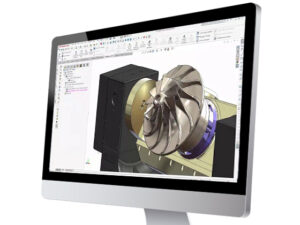In the manufacturing industry – precision, efficiency, and innovation are the cornerstones of success. Foundries, in particular, rely on intricate processes to produce molds, patterns, and castings that meet stringent quality standards while optimizing production. With the emergence of advanced technologies, such as SOLIDWORKS 3D CAD modeling software, foundry companies now have a powerful tool at their disposal to revolutionize their operations and drive competitiveness to new heights.
Leveraging SOLIDWORKS for Enhanced Molds
Molds are the foundation of the casting process, dictating the shape, dimensions, and intricacies of the final product. Traditionally, designing molds involved manual sketches and calculations, leaving ample room for errors and inefficiencies. However, with SOLIDWORKS, foundry companies can usher in a new era of precision and accuracy in mold design.
By harnessing the intuitive interface and robust features of SOLIDWORKS, engineers can create intricate mold designs with unparalleled detail. The software’s parametric modeling capabilities enable designers to easily iterate on designs, making adjustments in real-time to optimize for factors like cooling efficiency, material flow, and part release. Additionally, SOLIDWORKS’ simulation tools allow engineers to conduct virtual testing, predicting potential issues like warping or shrinkage before a mold is even manufactured, thus saving time and resources.
Revolutionizing Pattern Development
Patterns serve as the templates for molds, guiding the casting process and ensuring dimensional accuracy. Historically, pattern development was a labor-intensive process, often relying on manual craftsmanship and guesswork. However, SOLIDWORKS empowers foundry companies to streamline pattern development and elevate precision to unprecedented levels.
With SOLIDWORKS’ advanced surfacing capabilities, designers can create intricate patterns with intricate geometries and complex contours. Whether it’s a simple core box or a multipart pattern assembly, SOLIDWORKS provides the tools to visualize and refine designs with ease. Furthermore, the software’s integrated CAM functionality allows for seamless transition from design to manufacturing, ensuring that patterns are translated accurately from digital models to physical molds.
Optimizing Casting Processes
Casting is where the magic happens – molten metal is poured into molds, solidifying into the final product. The quality of castings is directly influenced by factors such as mold design, material selection, and process parameters. By leveraging SOLIDWORKS throughout the casting process, foundry companies can achieve unprecedented levels of quality and efficiency.
SOLIDWORKS’ comprehensive suite of design and simulation tools enables engineers to optimize casting processes for maximum efficiency and minimal defects. Through virtual prototyping and analysis, engineers can fine-tune parameters such as gating systems, riser placement, and cooling channels to enhance yield and reduce cycle times. Additionally, SOLIDWORKS’ integration with other manufacturing software and hardware solutions facilitates seamless data exchange, ensuring a smooth transition from design to production.
In an increasingly competitive marketplace, foundry companies must embrace innovation to stay ahead of the curve. SOLIDWORKS 3D CAD modeling software offers a transformative solution for improving molds, patterns, and castings, enabling foundries to achieve new levels of precision, efficiency, and quality. By leveraging SOLIDWORKS’ advanced features and capabilities, foundry companies can unlock new opportunities for growth, differentiation, and success in the dynamic world of manufacturing.
Learn More Here
Share
Meet the Author

